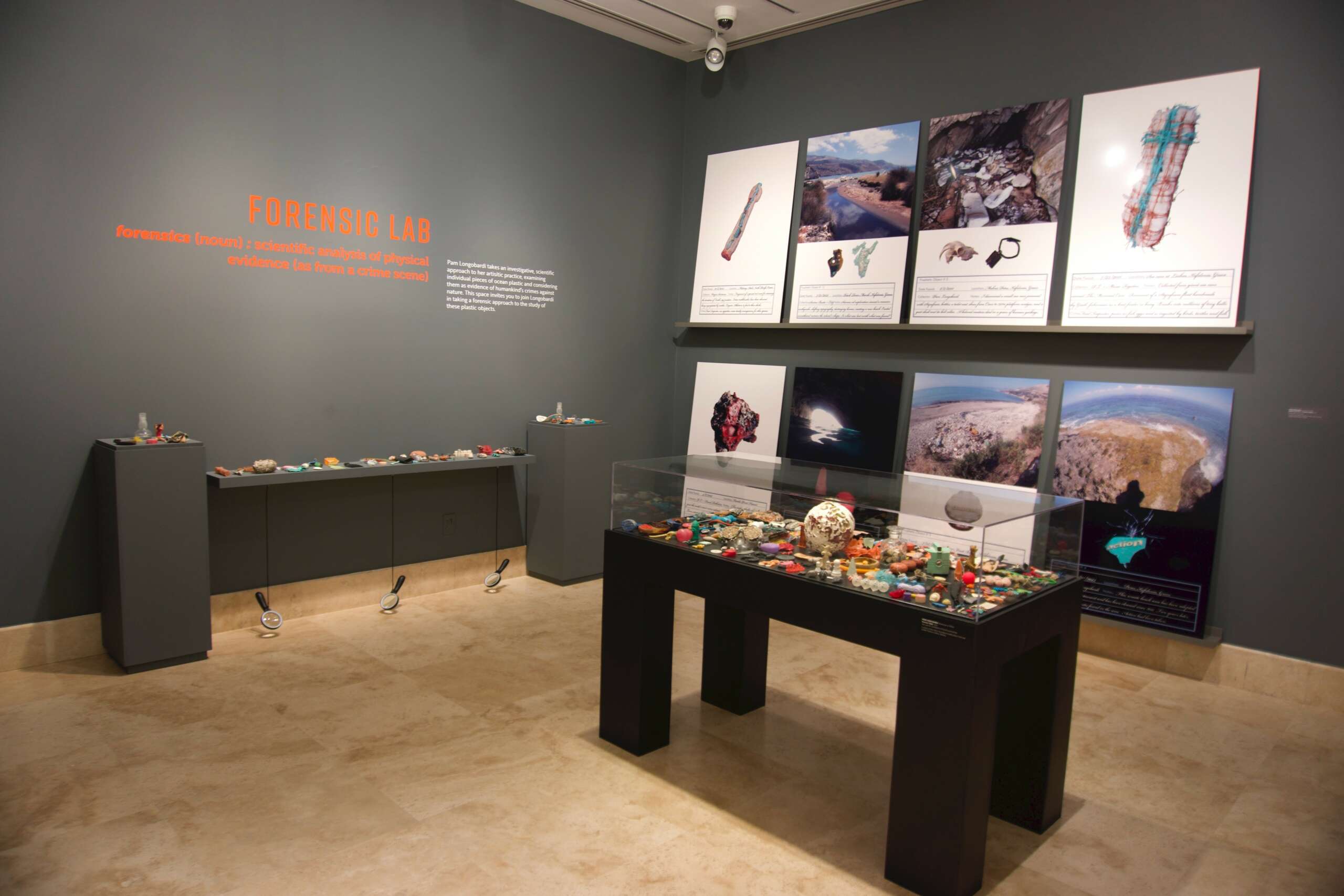We were lucky to catch up with Pam Longobardi recently and have shared our conversation below.
Pam, appreciate you joining us today. Let’s start with the story of your mission. What should we know?
My artistic trajectory took a turn in 2005 when I stumbled upon vast mountains of plastic spewed out by the ocean on Big Island, Hawaii. I was in a particularly remote and uninhabited area, but the piles of plastic were so deep, multi-colored, multi-shaped, I could stick my arm all the way to my shoulder but still could not reach the bottom. I was really struck in such a way that it completely changed my work. I started using plastics as my primary material.
After a few years working in Hawaii I started going out to other locations that were being impacted. Oceanic Society invited me on their expeditions as Artist-In-Nature, and my role was that of a “plastics interpreter”. For instance, on an expedition in Indonesia, I would collect plastics and bring them back on board to have discussions with other passengers onboard the ship, to look at this material waste forensically and decipher what was being told to us by the ocean through plastics as a communication tool. We had created those plastic products so I think we have an innate understanding of them – as if there is an elementary language that bridges the vast complexity that is nature and human comprehension.
When I tackle such overwhelming subject matter like ocean plastics, I need to scale it down to something manageable for both myself and the viewers. The materials I use carry a weight of their own, having been shaped by countless natural forces and beings, not mere empty shells of their original forms.
That’s where I start – bringing order to complexity.


Awesome – so before we get into the rest of our questions, can you briefly introduce yourself to our readers.
I am a conceptual artist with a strong affinity to materials and process. I was trained as a painter and printmaker but have always worked in varying mediums from photography to painting and collage to installation, allowing the ideas to dictate the materials I work with. Some ideas are better as paintings, others as installations. IN 2005, after discovering the mountainous piles of plastic debris the ocean was depositing on the remote shores of Hawaii, I began collecting and utilizing this plastic as the primary material in my project called Drifters, now having worked on sites all over the world. I am interested in the collision between nature and culture. Ocean plastic is a material that can unleash unpredictable dynamics. I am interested in it in particular, as opposed to all garbage in general, because of what it reveals about us as a global culture and what it reveals about the ocean as a type of social space, as well as a giant dynamic engine of life and change. As a product of culture that exhibits visibly the attempts of nature to reabsorb and regurgitate this invader, ocean plastic has profound stories to tell.


Is there mission driving your creative journey?
Plastic objects are the cultural archeology of our time. These objects I see as a portrait of global late-capitalist consumer society, mirroring our desires, wishes, hubris and ingenuity. These are objects with unintended consequences that become transformed as they leave the quotidian world and collide with nature to be transformed, transported and regurgitated out of the shifting oceans. The ocean is communicating with us through the materials of our own making. It is not the act of finding these mysterious plastic artifacts, it is learning from the thing that is found. An object with invisible histories becomes, at the end of its journey, transported into the cultural context of art in a way that shines the most intensely focused light on it. These objects become a mirror for examining ourselves.
The use value of a functional object becomes exchanged for a negative value of being a surrogate imposter of food as it fools creatures into eating it. I am hopeful I can create a new use value for it, as a signal, a historical marker, a warning. Collecting is an essential human obsession that has created somewhat disastrous consequences when it involves collecting living specimens of the natural world. As much as I am fascinated by the study of specimens in museums, (I used to work as a scientific illustrator in museums with research scientists,) it also sickens me to think about the drawers upon drawers of dead creatures, even endangered ones, that are still subject to active collection. We are creating a mausoleum of nature in which we consume everything; we name it, know it, and therefore we can ‘own’ it, but in some cases there is no viable wild population left alive. I used to collect shells when I was a child and no longer feel so ok with doing that; now I collect ocean plastic. I am deeply involved in collecting the relics of the near end of the era of massive global consumption. I think someday these objects will be viewed as evidence of a time of great folly. In this case, the act of collecting ocean plastic actually has a positive effect, it helps to divert further harm. Each object I, or anyone, collect is one less that will be in an albatross, or a sea turtle, or a microorganism.

Contact Info:
- Website: https://driftersproject.net
- Instagram: @driftersproject
- Facebook: Pam Longobardi
- Linkedin: pam-longobardi
- Twitter: @driftersproject
- Youtube: DriftersProject


